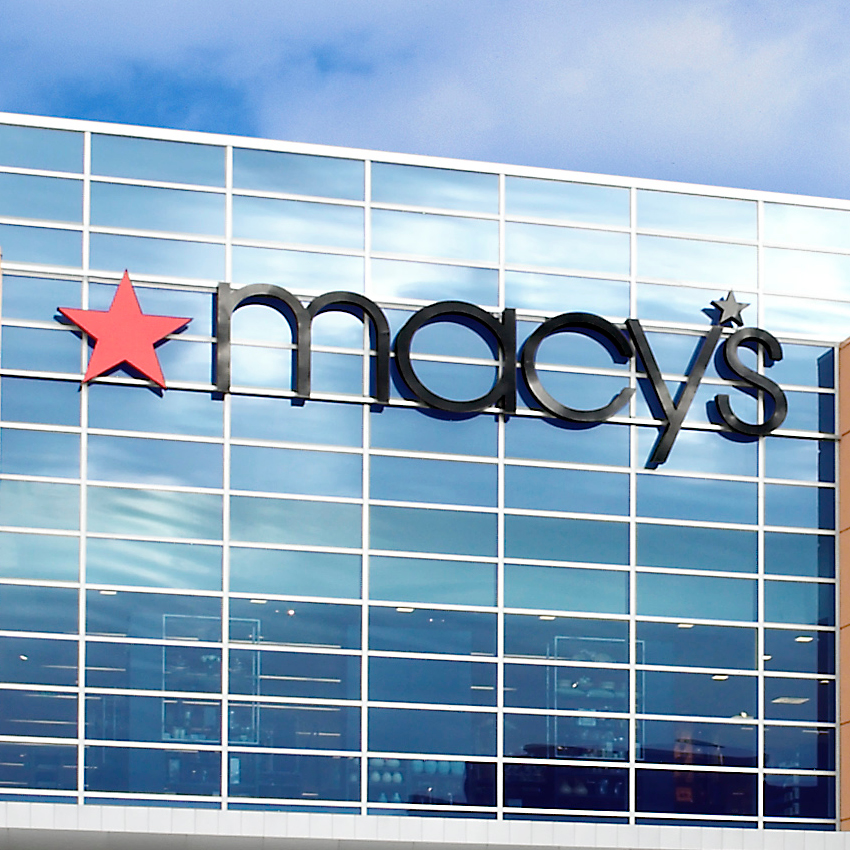Macy\’s was struggling even before the Covid-19 pandemic decimated fashion retailers, with profitability falling almost continuously since peaking in 2014. Earlier this year, management announced a new turnaround strategy called Polaris, but even successful execution of the plan would have translated into lackluster results. Management\’s targets entailed sales declines and only modest improvement in profitability over the next three years.
The pandemic has made Macy\’s situation far more dire. The company posted an adjusted loss of $630 million last quarter. It is likely to lose considerably more than $1 billion for the full year.
Retail pundits almost unanimously agree that only a wholesale reinvention can save Macy\’s, but they disagree about what the new strategy should be. Unfortunately, many of the proposed \”fixes\” appear completely unworkable. Macy\’s does need to evolve faster, but the company\’s size, cost structure, and debt load pose serious constraints to what is possible.
eCommerce Can\’t Be the Only Answer
Some experts recommend doubling down on e-commerce. With consumers gravitating towards e-commerce faster than ever, the advantage of adopting a plan like this (while dramatically shrinking the company\’s brick-and-mortar footprint) is that Macy\’s would be swimming with the tide rather than against it.
Furthermore, Macy\’s wouldn\’t be starting from scratch. It is already the 10th largest e-commerce retailer in the U.S., with a 1.1% share of the market last year: way behind Amazon\’s 38.7% but roughly comparable to Best Buy, Costco, and Target. Prior to the pandemic, e-commerce accounted for about a quarter of Macy\’s revenue.
The problem is that e-commerce is a low-margin business, particularly when you are shipping items to customers\’ homes for free. Selling online can be profitable at higher price points, but the cost of shipping and returns can eat up most or all of the profit for lower-price items (like much of what Macy\’s sells).
[callout]The pandemic has made Macy\’s situation far more dire. The company posted an adjusted loss of $630 million last quarter. It is likely to lose considerably more than $1 billion for the full year.[/callout]
Indeed, as recently as 2014, Amazon was running about breakeven, despite generating nearly $89 billion of annual revenue. Macy\’s does have the advantage of a store network that it can leverage for omnichannel initiatives like \”BOPS\” (buy online, pickup in store) and \”BOSS\” (buy online, ship to store) to reduce fulfillment costs and boost profits. Even so, the more Macy\’s drives sales towards digital channels, the less profitable it is likely to be in the years ahead.
Investors gave Jeff Bezos incredible leeway to invest in ultra-long-term growth initiatives. They won\’t have similar level of patience with Macy\’s. Given that it could take a decade or more for Macy\’s to achieve enough scale in e-commerce to earn profits comparable to its brick-and-mortar business, pivoting too hard in this direction would be a recipe for disaster.
Shrinking the Footprint Can Only Go So Far
Another common suggestion is that Macy\’s should radically downsize to its very best stores, where it can afford to invest in a truly differentiated shopping experience. The retailer is already moving in this direction, with plans to slash the number of full-line Macy\’s stores from 520 at the beginning of this year to just under 400 by 2022.
Some think the number needs to be far lower: maybe even fewer than 100 stores. However, as with proposals to pivot aggressively to e-commerce, shrinking to this extent would be taking a good strategy too far. Last year, Macy\’s operating expenses totaled $9 billion. Rightsizing that expense base for a dramatically smaller store fleet would be virtually impossible.
Of the ~400 full-line stores currently in Macy\’s long-term plans, just under half are in A malls or freestanding urban locations. That subset of the store fleet generates two-thirds of Macy\’s store-based sales. While highlighting the importance of Macy\’s best stores, this statistic also indicates that stores in B malls (and even some C malls) generate a third of the total sales from the core store fleet.
Notwithstanding its aggressive cost cuts, Macy\’s can\’t afford to walk away from nearly $5 billion of in-store sales by slashing its store count to 200 instead of 400 (let alone 100 or fewer). The loss of operating leverage would decimate Macy\’s profitability. While 400 isn\’t a magic number, it\’s hard to see how shrinking to fewer than 300 stores could be feasible in the near term.
Where Is Growth Possible?
In charting its future course, Macy\’s should consider which multi-brand retailers are earning high margins and growing without investing huge sums of capital. That rules out a full pivot to e-commerce, where there\’s a constant need for investment and margins are low (at least until you become dominant). It also suggests that moving dramatically upmarket isn\’t the right answer. Even highly-regarded Nordstrom\’s full-line business has struggled mightily in recent years.
The retailers with the most attractive business models almost all have small or medium-sized brick-and-mortar stores in strip malls and power centers. Off-price powerhouses like T.J. Maxx and Ross Dress for Less are the best examples. They consistently earn double-digit pre-tax margins despite operating fairly spartan stores that can be opened with minimal investment. Ulta Beauty also fits the bill.
Macy\’s already has a semi-proven off-price concept in Backstage. At present, Backstage mainly functions as a store-within-a-store, but there are also a handful of standalone locations. Prior to Covid-19, Macy\’s planned to add a handful of new standalone Backstage stores in 2020 to test the concept\’s growth potential. Now, it appears to be slowing or even pausing those plans. That would be a big mistake.
Instead, Macy\’s should lean into the Backstage concept and expand it faster using the liquidity it recently raised. Consumers will be looking for value in the years ahead, and while some pundits warn that the foray into off-price is diluting the Macy\’s brand, that\’s a risk worth accepting. After all, off-price as a business model is superior to full-price retail (i.e. higher margins despite lower investment).
The \”Market by Macy\’s\” concept launched earlier this year also holds promise. Market by Macy\’s is the company\’s attempt to meet customers where they are. For most of Macy\’s merchandise categories, the bulk of industry sales has already shifted to off-mall retail centers.
The new concept is essentially a large specialty store featuring a highly-curated assortment of national and local brands and private-label offerings. It also has a strong experiential component to draw in potential customers and keep them coming back, including an in-store cafe and a flexible space that hosted several events a week prior to shutting down due to Covid-19.
Market by Macy\’s would need to be tested in multiple markets before being rolled out more broadly. It could be tough to scale up the concept while customizing each location for its local market. However, as with Backstage, the risk is that Macy\’s won\’t even try, due to its current financial struggles. Former Macy\’s Brand Experience Officer Rachel Shechtman was leading the development of Market by Macy\’s, and she recently left the company as part of a massive corporate restructuring.
Reinvigorating Full-Line Stores
As for Macy\’s full-line stores, while they are unlikely to become major growth drivers again, there\’s a lot of room for improvement. Macy\’s cannot resign itself to permanently low traffic. The Covid-19 pandemic will end eventually. When it does, the retailer must be ready with new strategies to drive traffic to its stores.
In-store dining options would be a great place to start. Cafes would allow shoppers to grab coffee or a quick bite without leaving the store. Wine bars could serve as a weekend and after-work attraction, particularly if Macy\’s succeeds in fostering the development of apartment complexes and office buildings on parking lot land adjacent to dozens of its stores. Larger stores could also support casual dining concepts. Industry groups expect many restaurants (particularly independently-owned restaurants) to close permanently due to the pandemic, creating an opportunity here.
Macy\’s should integrate its food and beverage concepts with shopping as much as possible. Customers should have the option to order through the store\’s app and have drinks brought to them while they shop. Or they could have an in-person or virtual style consultation while enjoying a meal or a glass of wine, with items to try on waiting in a fitting room by the time they finished.
Adding in-store product demonstrations, cooking classes, and other events could help to draw shoppers in, too. Macy\’s is also considering entering new product categories. Toys would be a great if the company focuses on unique items that vendors don\’t want to distribute through mass merchants like Walmart and Target. An interactive environment where kids can discover new toys could be a big draw, while also starting to develop brand affinity among the next generation of consumers from a young age.
The expansion of Backstage as a standalone chain (possibly along with the Market by Macy\’s concept) represents Macy\’s best shot at growing its brick-and-mortar sales. However, without a compelling vision for the core full-line store fleet to give customers more reasons to visit, Macy\’s will never reach its full potential.




